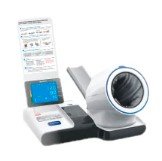Advancements in Medical Lab Technology for Enhanced Phlebotomy Procedures in the United States
Summary
- Advancements in medical lab technology have greatly improved phlebotomy procedures in the United States.
- New equipment such as vein finders and blood collection devices have increased accuracy and efficiency in blood draws.
- Innovations like Electronic Health Records and telemedicine have streamlined communication and data management in the healthcare industry.
Introduction
Medical laboratory technology has seen significant advancements over the years, leading to improved phlebotomy procedures in the United States. These advancements have not only enhanced the accuracy and efficiency of blood draws but have also revolutionized how healthcare professionals communicate and manage patient data. In this article, we will explore the latest technological innovations in medical labs and equipment that have contributed to enhancing phlebotomy procedures.
Advancements in Medical Lab Technology
Medical lab technology has undergone rapid advancements in recent years, with new equipment and tools being developed to improve patient care and outcomes. Some of the key advancements in medical lab technology that have had a significant impact on phlebotomy procedures include:
Vein Finders
Vein finders are devices that use near-infrared light to visualize veins in a patient's skin, making it easier for phlebotomists to locate and access veins for blood draws. These devices have greatly improved the success rate of blood draws, especially in patients with difficult-to-access veins such as children, elderly patients, and those with obesity or dark skin tones.
Blood Collection Devices
New blood collection devices, such as vacuum-sealed tubes and safety lancets, have made the blood collection process safer, more efficient, and less painful for patients. These devices are designed to minimize the risk of contamination and Needlestick Injuries, ensuring the safety of both patients and healthcare professionals during phlebotomy procedures.
Automated Testing Systems
Automated testing systems have revolutionized the way medical labs process and analyze blood samples, allowing for faster and more accurate Test Results. These systems can perform a wide range of Diagnostic Tests simultaneously, reducing turnaround times and increasing the efficiency of laboratory operations.
Technological Innovations in Healthcare Communication
In addition to advancements in medical lab technology and equipment, innovations in healthcare communication have also played a crucial role in improving phlebotomy procedures in the United States. Some of the key technological innovations in healthcare communication that have transformed the way healthcare professionals interact and share information include:
Electronic Health Records (EHRs)
Electronic Health Records (EHRs) have replaced traditional paper-based medical records, allowing Healthcare Providers to access and share patient information securely and efficiently. EHR systems streamline the documentation process, reduce errors, and enable real-time communication among healthcare teams, improving the quality of patient care and enhancing coordination between phlebotomists, doctors, and other healthcare professionals.
Telemedicine
Telemedicine refers to the use of technology to deliver healthcare services remotely, allowing patients to consult with Healthcare Providers and receive medical care without having to visit a physical medical facility. Telemedicine has become increasingly popular in the United States, especially during the Covid-19 pandemic, and has helped improve access to healthcare services, including phlebotomy procedures, for patients in rural and underserved areas.
Mobile Health Apps
Mobile health apps have transformed the way patients manage their health and interact with Healthcare Providers. These apps allow patients to schedule appointments, access lab results, track their health metrics, and communicate with their healthcare team from the convenience of their smartphones. Mobile health apps have empowered patients to take control of their health and play a more active role in their care, including participating in phlebotomy procedures and monitoring their lab results.
Conclusion
Advancements in medical lab technology and equipment have significantly improved phlebotomy procedures in the United States, making blood draws safer, more efficient, and less invasive for patients. From vein finders and blood collection devices to automated testing systems, the latest technological innovations in medical labs have enhanced the accuracy and speed of diagnostic testing, leading to better patient outcomes. In addition, innovations in healthcare communication, such as Electronic Health Records and telemedicine, have revolutionized the way healthcare professionals interact and share information, improving coordination and collaboration in the healthcare industry. As technology continues to evolve, we can expect further advancements in medical lab technology and phlebotomy procedures that will enhance patient care and drive innovation in the healthcare industry.

Disclaimer: The content provided on this blog is for informational purposes only, reflecting the personal opinions and insights of the author(s) on the topics. The information provided should not be used for diagnosing or treating a health problem or disease, and those seeking personal medical advice should consult with a licensed physician. Always seek the advice of your doctor or other qualified health provider regarding a medical condition. Never disregard professional medical advice or delay in seeking it because of something you have read on this website. If you think you may have a medical emergency, call 911 or go to the nearest emergency room immediately. No physician-patient relationship is created by this web site or its use. No contributors to this web site make any representations, express or implied, with respect to the information provided herein or to its use. While we strive to share accurate and up-to-date information, we cannot guarantee the completeness, reliability, or accuracy of the content. The blog may also include links to external websites and resources for the convenience of our readers. Please note that linking to other sites does not imply endorsement of their content, practices, or services by us. Readers should use their discretion and judgment while exploring any external links and resources mentioned on this blog.
